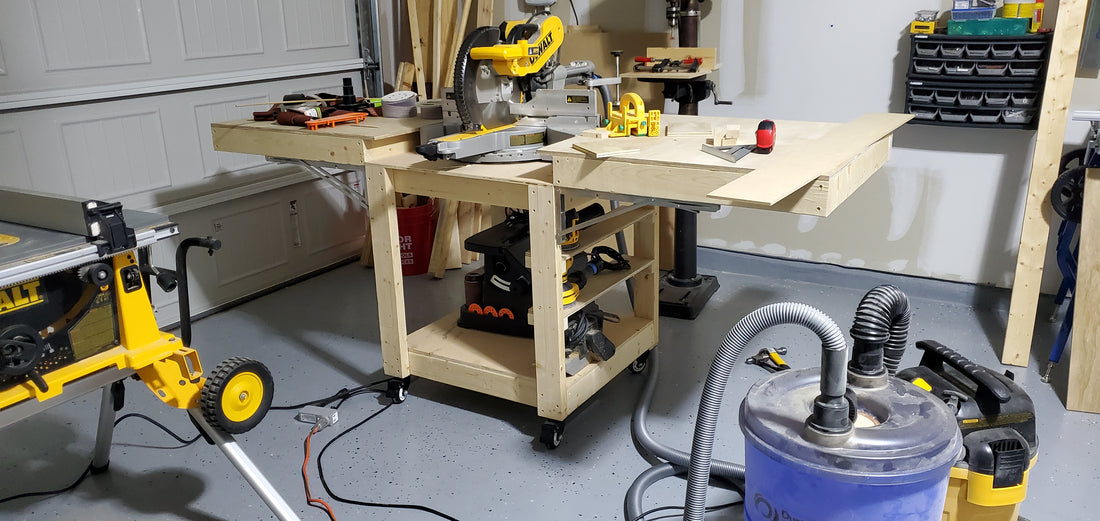
The Essential Role of a Miter Saw in Woodworking
Unlocking Precision: The Essential Role of a Miter Saw in Woodworking
When it comes to woodworking, achieving precision and efficiency is crucial. Enter the miter saw—a tool that has revolutionized the way both hobbyists and professionals approach their projects. Whether you’re crafting a custom picture frame or installing intricate crown molding, a miter saw can be an invaluable addition to your toolkit. Here’s a closer look at why this tool is so essential and how it can enhance your woodworking experience.
### What is a Miter Saw?
A miter saw, also known as a chop saw, is a power tool designed to make accurate crosscuts and miter cuts in wood and other materials. It consists of a circular blade mounted on a swing arm that pivots left or right, allowing for precise angle cuts. The primary types of miter saws include:
- **Standard Miter Saw:** Ideal for basic crosscuts and miter cuts.
- **Compound Miter Saw:** Offers the ability to tilt the blade for bevel cuts in addition to miter cuts.
- **Sliding Miter Saw:** Features a sliding mechanism that allows for wider cuts and increased versatility.
Each type has its own strengths, and the choice depends on your specific project needs.
### Precision Cuts: The Miter Saw Advantage
One of the standout features of a miter saw is its ability to deliver highly accurate cuts. This precision is crucial for projects that require exact angles and lengths. For instance, when constructing a picture frame, the corners need to be perfectly aligned to create a professional finish. A miter saw ensures that each cut is precise, reducing the need for adjustments and corrections.
Moreover, miter saws come with adjustable miter gauges and bevel settings, allowing you to easily customize the angle of your cuts. This versatility is essential for achieving complex cuts with ease.
### Versatility in Woodworking Projects
The versatility of a miter saw extends beyond simple crosscuts. With its ability to make bevel and compound cuts, this tool is perfect for a variety of woodworking projects. Whether you’re building a custom piece of furniture or working on detailed trim work, a miter saw can handle it all.
For example, when installing crown molding, a compound miter saw allows you to cut at precise angles to fit the molding snugly against the wall and ceiling. Similarly, if you’re constructing a piece of furniture with angled joints, the miter saw’s bevel and miter functions make it easier to achieve the desired results.
### Efficiency and Time-Saving
One of the greatest advantages of a miter saw is its efficiency. Compared to traditional hand saws, a miter saw can significantly speed up the cutting process. Features like adjustable angles and quick setups help streamline your workflow, allowing you to complete projects faster and with greater ease.
For instance, when cutting multiple pieces of wood to the same length, the miter saw’s precision ensures that each piece is uniform. This efficiency not only saves time but also reduces material waste, as fewer mistakes mean less wood is wasted.
### Safety Features and Tips
Safety is paramount when using any power tool, and the miter saw is no exception. Modern miter saws are equipped with several safety features, including:
- **Blade Guards:** Protect users from accidental contact with the spinning blade.
- **Safety Switches:** Prevent accidental starts and ensure the tool is only operated when intended.
- **Dust Collection Systems:** Help keep the workspace clean and reduce inhalation of sawdust.
To use a miter saw safely, always wear eye and ear protection, keep your workspace organized, and ensure that the wood is securely clamped before cutting. Regular maintenance, such as cleaning the blade and checking for loose parts, will also contribute to safer operation.
### Maintenance and Care
Maintaining your miter saw is essential for its longevity and performance. Regular cleaning, checking for wear and tear, and replacing blades when necessary are key aspects of upkeep. Ensure the blade is sharp and properly aligned to achieve the best results and prevent potential damage to the tool.
### Choosing the Right Miter Saw for Your Needs
Selecting the right miter saw depends on your specific requirements and budget. Consider factors such as:
- **Blade Size:** Larger blades can handle bigger cuts, while smaller blades are suitable for more intricate work.
- **Power:** Higher-powered saws offer more cutting capacity but may come with a higher price tag.
- **Additional Features:** Look for features like laser guides, digital displays, and extended fences that can enhance your cutting precision and convenience.
### Real-World Applications and Success Stories
Many woodworking enthusiasts and professionals have found miter saws to be game-changers in their projects. For example, a carpenter might share how the accuracy of their miter saw made installing custom cabinetry a breeze, or a DIYer might highlight how the tool helped them achieve flawless cuts in their home renovation projects.
### Conclusion
In the world of woodworking, a miter saw stands out as an indispensable tool for achieving precision, efficiency, and versatility. Whether you’re a seasoned craftsman or a weekend warrior, incorporating a miter saw into your toolkit can elevate your projects and streamline your workflow. By understanding its capabilities and maintaining it properly, you can unlock the full potential of this remarkable tool.
Feel free to share your own experiences with miter saws or ask questions in the comments below. For those new to woodworking, investing in a quality miter saw could be the next step in taking your skills to the next level. Happy cutting!
